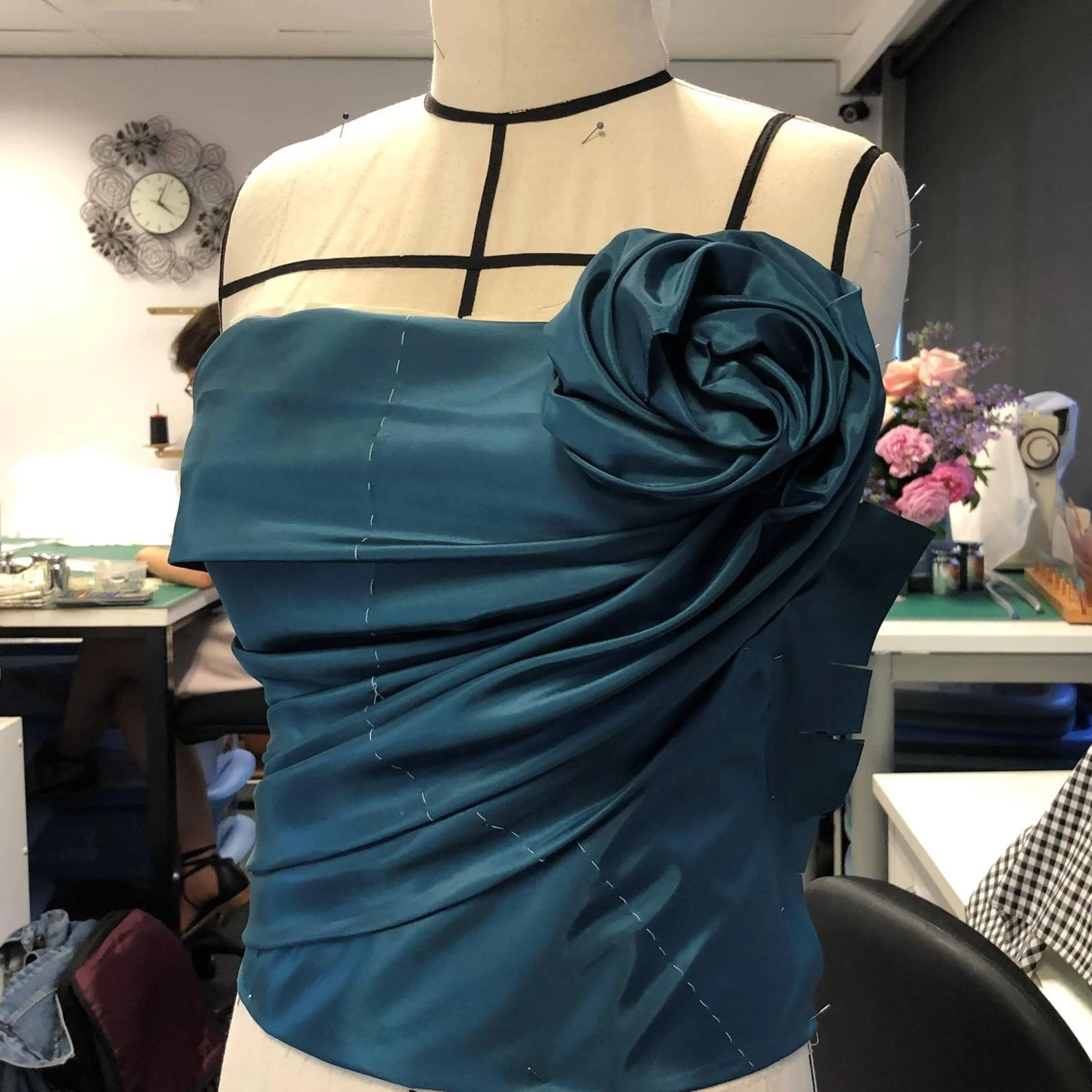Draping (or as the French call it, moulage) is a technique used to create 3D patterns by manipulating and pinning fabric on a dress form (or dressmaker’s mannequin). It’s a technique that fashion designers use to explore the fusion of fabric, shape and fit. Many designers prefer draping to sketching as they can see how the fabric falls and be able to experiment with different silhouettes and textures as they work towards a final design.
Many prominent fashion designers are known for their signature draping expertise. Madeleine Vionnet pioneered draping on the bias grain at the beginning of the 20 century at a time when women were embracing less restrictive clothing. Her concept designs often started with a half scale dress form. Madame Gres (born Germaine Émilie Krebs) was another influential Parisian couturiére, prominent during 1930s and 40s and beyond. She famously used 30-70 yards of silk jersey to drape a single dress. During the 1950s, the Spaniard Christobal Balenciaga became known as the “King of Fashion” with his structural designs and famous one-seam Yoki coat. Notable 21st designers embracing draping are Elie Saab and Toni Maticevski.
Draping may be used to make any kind of pattern, but it’s most often employed for eveningwear using one of more of the following design elements:
Sunburst (or radiating). As the name suggests, upward facing pleats appear to radiate from a single origin point (not necessarily on the garment). The origin point may not be on the garment.
Gathering or ruching to create texture and visual interest and to highlight features (for example, to accentuate a bustline).
Bandage drape. This very fine, uneven ruching is sewn down layer by layer to hold it in place. The signature style of Herve Leger, this is the most time-consuming draping technique.
Cascade or cowl drape. The centre of the drape is on the bias and it sits in cascading pleats that always face upward. Sometimes the term cascade is also used to describe a vertical ruffle on a dress,
Twist and knots are often used to conceal seams and structures. A twist knot drape may also be used to join a conceal two separate pieces of fabric.
Draping with narrow widths. This technique originated in response to fabric shortages and the availability of silk fabrics in narrow widths.
If you’d like to learn Draping, we offer this an Advanced Pattern Making class. You will need to complete an Introductory Pattern Making class or have the equivalent experience.
Happy sewing.
Gaylene



